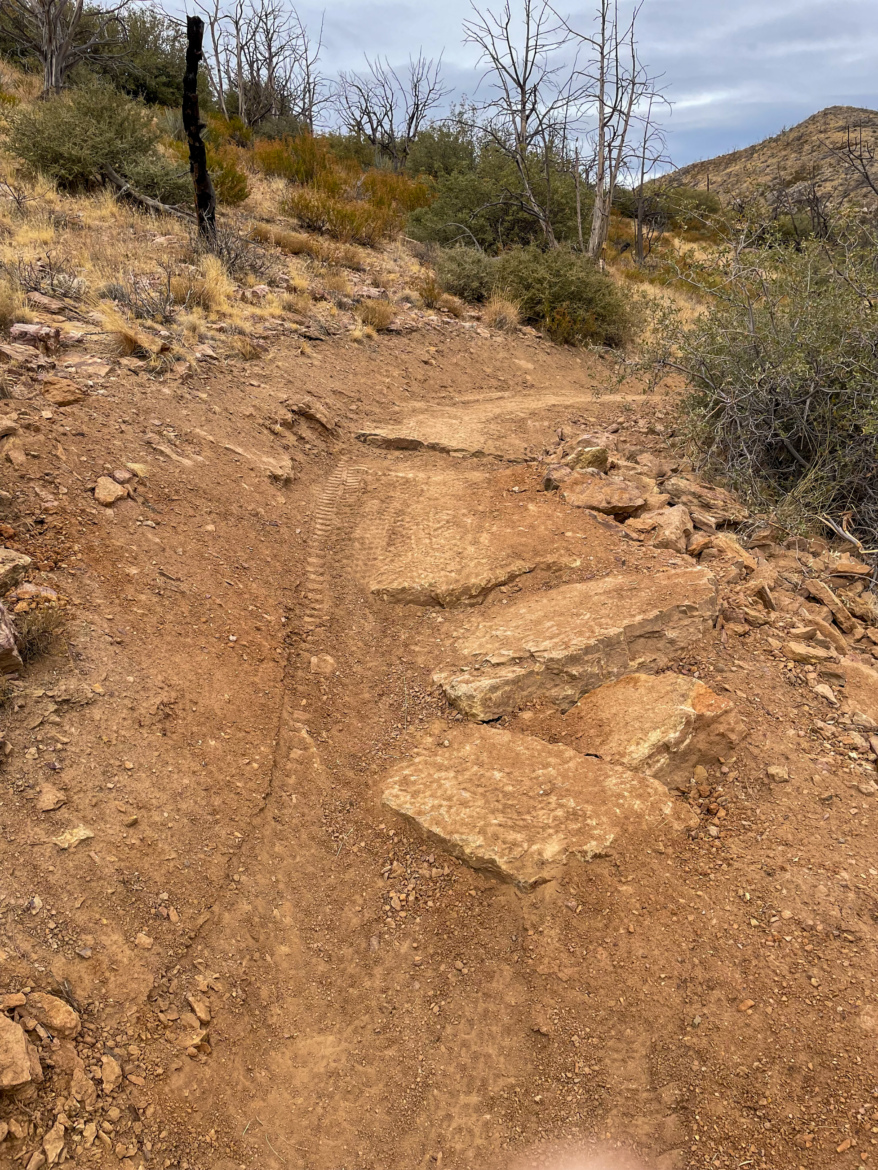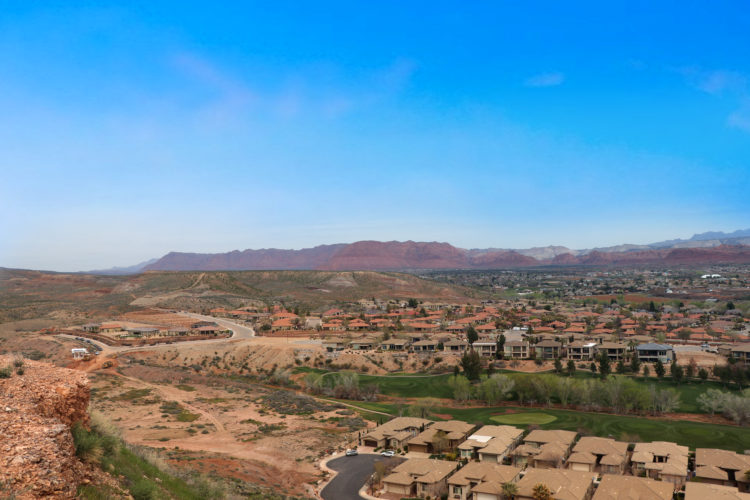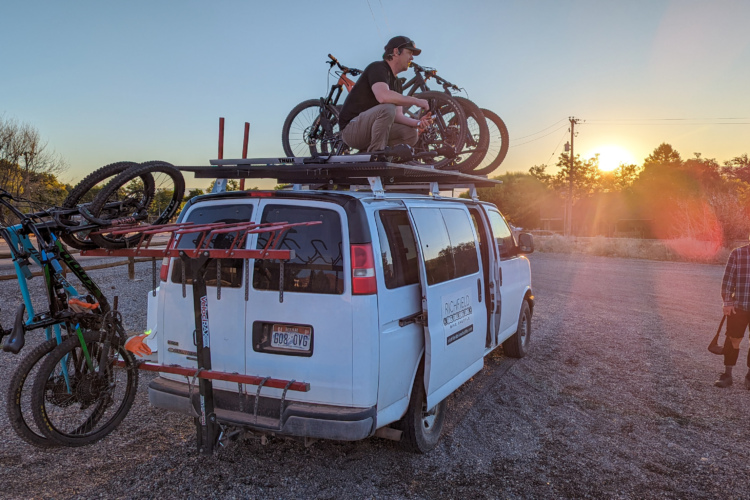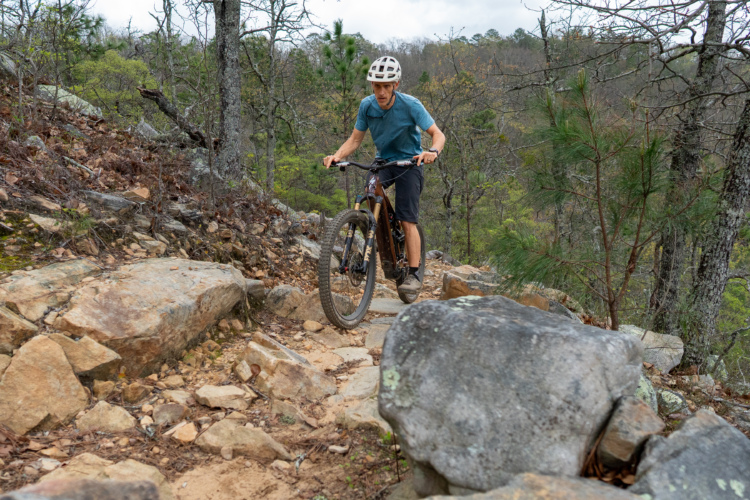
An epic 5-mile downhill mountain bike trail is about to open in southwest Utah
Five miles of uninterrupted descending is hard to come by, even in the elevation-rich riding zones of the American West. The town of St. George, Utah, will soon boast just that with one of the area’s newest trails, Hell Hole DH. After a long wait, the Trail Alliance of Southern Utah (TASU) is looking forward to officially cutting the ribbon on Hell Hole soon.

Part of a new trail system…
Southwest Utah conjures images of sandstone cliff mesas and Red Bull Rampage-esque lines. Those zones lie to the east of St. George, as does the lion’s share of trails in the area. Two connected riding areas — Santa Clara Preserve and the Greater Moe’s Valley — are located west of the city, with a respectable amount of trails between them.
Until 2024, if you were to travel any further west than Santa Clara Preserve, you’d enter a dead zone with no bike-legal singletrack. However, in April, TASU opened the Revenant Bike Park, roughly 30 minutes due west of St. George near West Mountain, as a part of a bigger plan for the area.
“So, phase one was a progressive series of jump lines,” TASU President Kevin Christopherson told us, referring to Revenant Bike Park.

The bike park is comprised of eight trails, offering a flowier option for St. George riders than the rocky tech the area is known for. Revenant has two green and two blue trails, along with one black and double black trail, all descending only. Two more trails—both greens—are climbing only.
The Revenant trails offer steady progression as riders work up to the 20-foot gaps on the double black trail. Each trail is roughly one mile long, dropping nearly 250 feet from its beginning, except for the single black diamond trail, dropping 134 feet in three-tenths of a mile.
Phase two of TASU’s plan for the area is their new downhill trail, Hell Hole DH. The trail will end at the top of Revenant Bike Park, with the start located five miles away on the slopes of West Mountain.
And, according to Christopherson, all five miles are doable with just a dozen or so pedal strokes.



A Hell Hole History
Mountain bike trails near West Mountain have been in the works for nearly a decade. Over the years, TASU worked with the BLM to complete different environmental assessments, slowly checking off the boxes to get shovels in the dirt. The money came from a grant from the Utah Division of Outdoor Recreation, with the BLM matching some funds.
“An election year politics got us, and literally weeks before we were going out for bid, the BLM lost their money,” Christopherson told us. With the BLM’s matching funds off the table, TASU couldn’t hold on to some of the other grants they received.
The West Mountain project lay dormant until a few years ago when TASU approached the BLM about resurrecting it. TASU had around $100,000 in donations toward the project, which was matched by a state grant. This allowed TASU to move the process forward, hiring Surface Trails to build the Revenant Bike Park and IMBA Trail Solutions to build Hell Hole.
Trail Solutions has two crews working on Hell Hole, pushing to wrap up the build soon. But a five-mile descent with only a handful of pedal strokes isn’t easy to build in the southwest Utah desert.
TASU had to design the route carefully to keep Hell Hole DH downhill-focused. Placing it in one particular spot would have it too close to nesting birds, while another would have it running through potential artifacts. TASU had to hold to the environmental assessment as they considered the area’s topography.
“It was a lot of planning, for sure,” Christopherson told us. “The original design dropped into a place called Welcome Springs [but] there’s archeology there… archeology is a big thing here.”
They also had to consider access. The terrain is rugged and wild, with many areas only accessible by 4×4. Fortunately, years of planning and searching for the perfect zone paid off, with five miles of trail south of West Mountain mapped out.
Best yet, an already established county road named “Hell Hole” was nearby. This road, which provides access to radio towers in the area, will become a shuttle road for mountain bikers riding Hell Hole DH and give the trail its name. “If you’re the shuttle guy, you drop off your buddies,” Christopherson explained, “go down and ride the Revenant trails and wait for them to show up.”
Of course, climbing-inclined people can put their heads down and grind up the road.
We may have specific perceptions of riding in southwest Utah, but the terrain west of St. George differs. Christopherson described Joshua trees, barrel cacti, and granite rather than the red rock and sandstone mesas we might expect.
When complete, Hell Hole DH will start at nearly 5,800 feet, dropping almost 1,500 feet as it descends to an elevation of 4,300 feet. While plenty of steep sections dot the trail, the average grade is 6% – 8% and will be blue, leaning toward the dark blue side of the spectrum. The trail is machine-built, albeit using smaller machines and finished by hand. Hell Hole DH won’t be the same as the “flow trails” found at Revenant Bike Park, but it also won’t be the technical riding found so often in the area. Newer riders can expect quite a bit of a challenge, while more experienced riders can push limits, finding more advanced side options as they descend.
Plans are also being made for two more trails coming off Hell Hole DH — a black and double black. “We’ve got approval for two side loops on [Hell Hole] that’ll be hand-built,” Christopherson told us. “The double black is pretty hardcore.”
Christopherson doesn’t expect the two side loops — El Diablo and Purgatory — to be underway until next year. As far as Hell Hole DH, Christopherson expects its completion by the end of December. “Hopefully, we’ll have a Merry Christmas with the new downhill trail this year.”





















3 Comments
Dec 12, 2024
Dec 13, 2024
Mar 7, 2025